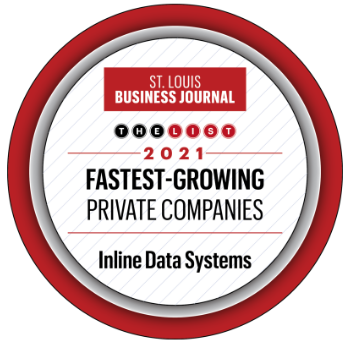It’s a fact that companies can see an ROI of up to 800% by using a CRM.
It’s also a fact that, for whatever reason, it might be time for you to get a new CRM.
You could either “pick from the shelf” or make your own. And for some, the latter approach can be tempting, with a few things working in its favor:
- You’ll be in complete control
- It’d be built specifically for your company
- You wouldn’t have to rely on 3rd parties
But if you take off the rose-colored glasses, there are some potential headaches that may not be worth the effort.
Here’s what you should remember if you’re thinking about making a homegrown CRM for your business.
IT CAN TAKE A REALLY, REALLY LONG TIME
Building your own CRM doesn’t happen by snapping your fingers.
Much, much more is involved than identifying your needs and hiring someone to build to your specs. The start-to-finish roadmap looks something like this:

Pretty elaborate, right?
And since you’re probably building out your own CRM so you can customize it exactly how you want, you should plan on completion at least a few months from step one of the roadmap above.
Maybe even a year or more.
And many businesses can’t afford to wait that long.
IT WILL COST THOUSANDS OF THOUSANDS OF DOLLARS
You know there will be an upfront cost to build your own CRM system. Just how much might be staggering.
It’s not unheard of for the final price tag to be upwards of $700,000, depending on the requirements.
Now you could try to shave some costs by hiring a lower-level software engineer to build it, but why would you? Their going rate will still be a conservative $35 an hour, which will add up quick. And if your needs are so complex that you need to build from scratch, you’d probably want a more seasoned professional—who will charge more—working on it.
Once you hire your developer, you’ll have to train them up on the finer details of extended warranty space (just cross your fingers you don’t have to re-hire and re-train another developer later).
Then, you’ll have to add other costs that will mount over time:
- Future releases
- Patches and bug fixes
- Hosting
That’s not to mention creating even more training: Creating the materials, reference guides, tutorial videos or any other information for your employees to reference so they know how to use what you’ve spent so much time and money on.
UNFORSEEN FUTURE FUNCTIONALITY
Let’s say you follow through and launch your homegrown CRM. It has everything you need and it does everything you want.
Then what?
What happens in six months or a year down the road?
You’ll want to keep improving, naturally. And that means upgrading your CRM to include functionality that didn’t exist when you were building it.
The fact is, reputable CRMs have entire teams dedicated to implementing customer-requested features and working on advanced functionality in the background.
Unless you have a crystal ball or hire someone full-time to do nothing but work on your creation, your homegrown CRM might become obsolete sooner than you think.
INTEGRATIONS CAN BE GRATING
One of the main reasons your business uses a CRM is to have all the information you need at your fingertips.
That information needs to be integrated from somewhere—maybe even as many as 900 different places.
Odds are, your homegrown CRM wouldn’t need to integrate that many systems. Even if it did, you could probably manage it—at first.
But the 3rd party software you integrate will have its own updates and new versions. Sure, whomever you task can write some quick code for the systems to communicate, but after a while and version after version, it can become an unusable, tangled mess.
(Just so you know, Inline’s CRM offers full integration for the APIs your business uses the most.)
MANUAL SALES FULFILLMENT
Once you make a sale, you have to fulfill it. It’s literally the law.
In the extended warranty space, part of that is printing and mailing physical or digital copies of the policy booklet, cards and other materials.
Not many CRMs have this built-in capability—but ours does. Not to mention direct marketing solutions to help you sell more service contracts.
If You’re Still Thinking of Building Your Own CRM…
Make sure you’re 100% committed to seeing it through to the end—mindful that in many ways, there is no end when it comes to maintaining your CRM.
Better yet, test drive our CRM before you make your decision. It’s our own homegrown system used by some of the biggest names in the warranty sales space.





